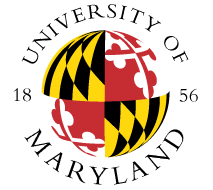Excurtion report 1: The Chesapeake Bay Foundation:
Title: Virtual Excurtion - "Throwing Shade: Heat Islands, Public Health, and Clean Water"
This presentation is about urban heat islands and urban rain islands and the Chesapeake Bay. Heat islands are areas that are hotter than their surrounding areas due to human activity. Rain islands are areas that have more precipitation due to urbanization. They discuss climate issues overtime and how to find solutions to combat these problems. The increased heat is causing more natural disasters, and increased illnesses in people, specifically in Virginia. By planting native plants, trees that provide shade or rain gardens we can start improving the environment and decreasing climate change.
The main point of the presentation was to help students understand what heat islands and rain islands are, what they cause, and what we can do to decrease them. The points in the presentation are accurate and were supported by outside sources, which were cited. We need to continue increasing awareness and spreading information about climate change and what to do in order to decrease the effects of climate change overtime. In my SGC course we learned about climate change and increased temperatures. The presentation did not seem to have any logical fallacies or bias. The information was very well presented and the graphics were very helpful when explaining different terms and temperatures.
Excurtion report 2: The Chesapeake Bay Foundation:
Title: Virtual Excurtion - "Chicken Litter: The Sky is Falling"
A lecture from The Chesapeake Bay Foundation about the poultry industry provided a detailed overview of the environmental impact of poultry farming. The lecture focused on the Delmarva peninsula and Virginia regions and their agricultural sectors that contribute to food supply chains and economies. There are multiple environmental concerns from the poultry industry like ammonia emission and water pollution from nutrient runoff and litter management. Nutrient runoff like phosphorus and nitrogen can cause algal blooms and dead zones in the Bay which affects ecosystems and wildlife. Regulations have increased due to the growth of the poultry industry and how it affects the Bay. A big concern is litter additives and unregulated manure transfers. Advocacy groups are asking for stricter regulations and monitoring, especially little additive use and manure transfers. Litter additives are very useful for reducing ammonia emissions and improving bird health. However, their use is not consistently reported which causes problems when trying to monitor little additive usage. By covering stockpiles of manure, we can reduce the amount of nutrient runoff to the Bay or other bodies of water. Manure management plans are necessary to decrease nutrient runoff and pollution to the Bay.
The lecture was about how the poultry industry impacts the Bay. All the points that were mentioned were accurate because they were cited and the speakers referred back to studies. The use of pictures in the presentation were very helpful when trying to understand what different things are and how it is affecting the Bay as a whole. Overall, We need to start advocating for the reporting of litter additives, covering temporary stockpiles, and increasing overall regulations of poultry farms in order to save our Bay. In my SGC course we learned about nutrient pollution and runoff which can contribute to climate change and environmental issues. I did not see any logical fallacies or failure of critical thinking in the presentation, it was very informative. The presentation explained the main points in a clear and concise manner.
Excurtion report 3: The Chesapeake Bay Foundation:
Title: Virtual Excurtion - "Climate Change: A Scientist and a Lawyer Walk into a Webinar"
This presentation is a webinar that discusses climate change in both scientific and legal perspectives in order to bring more attention to rising sea levels in the Chesapeake Bay. Climate change and global warming is due to increased greenhouse gases. As temperatures continue to increase, the temperature of the Chesapeake Bay also increases which leads to a reduction in oxygen levels. This can threaten aquatic life and cause dead zones. Dead zones are areas in water where oxygen levels are very low which lead to less aquatic life. Legal efforts to reduce the effects of climate change were also discussed in the webinar. The Clean Air Act and the Environmental Protection Agency work to reduce the effects of climate change and manage emissions from power plants and vehicles. Overall, increased advocacy and action for combating climate change is necessary to lower the effects of it on earth.
Spreading more awareness about the result of climate change and what the government is doing to combat it is very important, especially so people can understand the drastic effects climate change has on our lives. The points made in the presentation were supported by outside sources which makes them accurate. In my SGC course we discussed the reasons behind the climate crisis and how this is due to human actions. The presentation discussed greenhouse emissions which directly ties into what we were learning in class about why climate change occurs. There were not any forms for bias or lack of critical thinking in the presentation.
Excurtion report 4: The Chesapeake Bay Foundation:
Title: Virtual Excurtion - "Plastics and Microplastics: An Emerging Global Issue"
This presentation discussed how plastics and microplastics are creating lots of global issues, especially increasing the effects of climate change. Microplastics are a global issue that causes environmental degradations, entanglement of marine life, and increased accumulation in oceans and waterways. Plastic is nonbiodegradable and can take centuries to even start to decade. Primary microplastics are manufactured products that are used in cleansers, drugs and more. Secondary microplastics are plastics that have been broken off from larger pieces of plastic which is usually what you see on beaches. Microplastics are being found in seafood because fish ingest the plastic which then ends up in our food. We are also finding microplastics in beer because the water from the ocean that contains microplastics also contains microplastics which arenít filtered out which then end up in our drinks. This causes concerns about food safety.
The presentation was a way to raise more awareness about plastic use and microplastics in the environment. The points in the presentation were all supported by outside sources and research. There were no logical fallacies or lack of critical thinking found in the presentation. This related to my SGC course because, in class, we discussed the reasons for climate change and how human activity is a large piece of climate change. Plastic use and disposal is all human made which shows a direct relationship between plastic/microplastic pollution and human use. The presentation was very clear, engaging, and informative.


